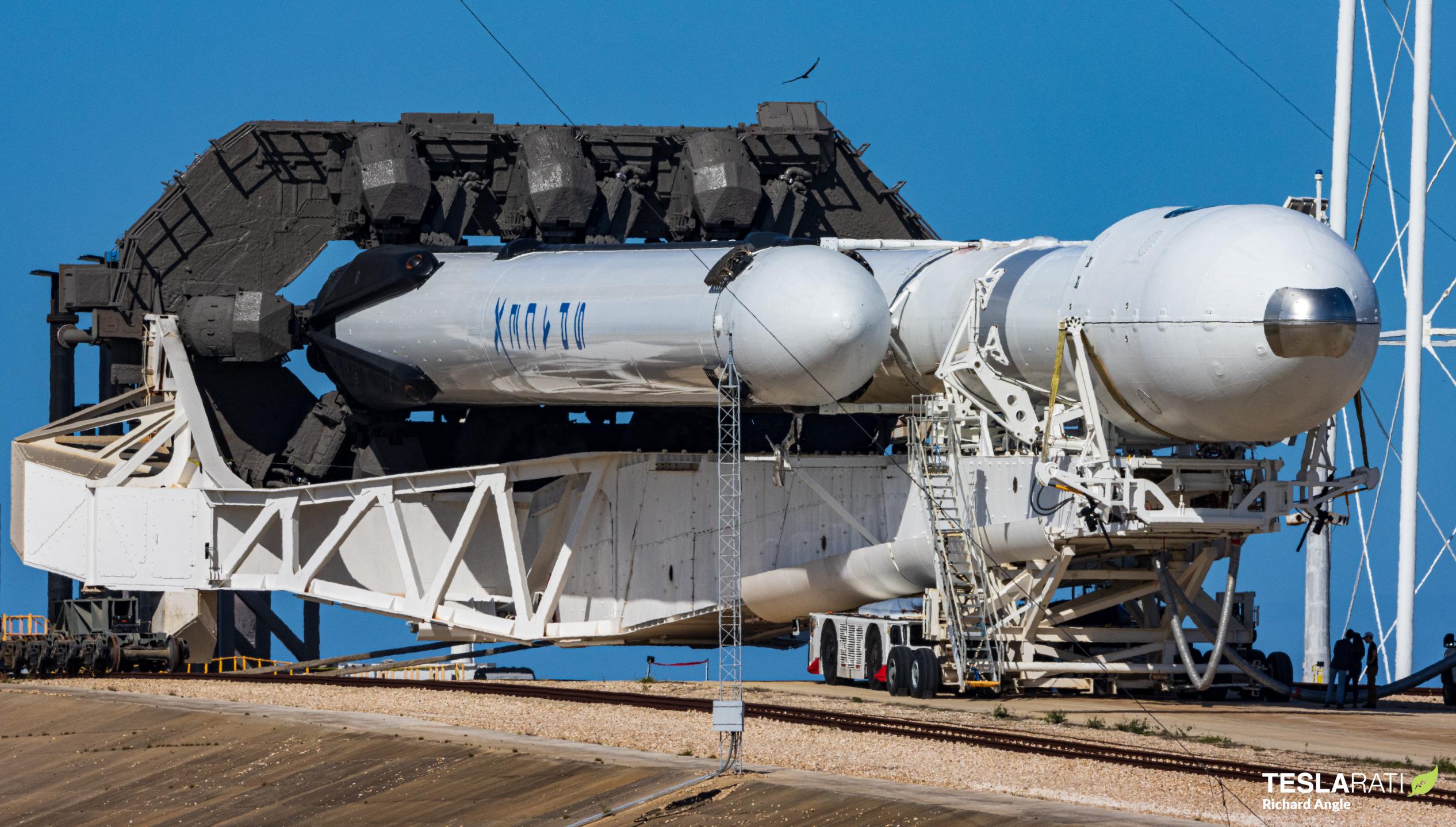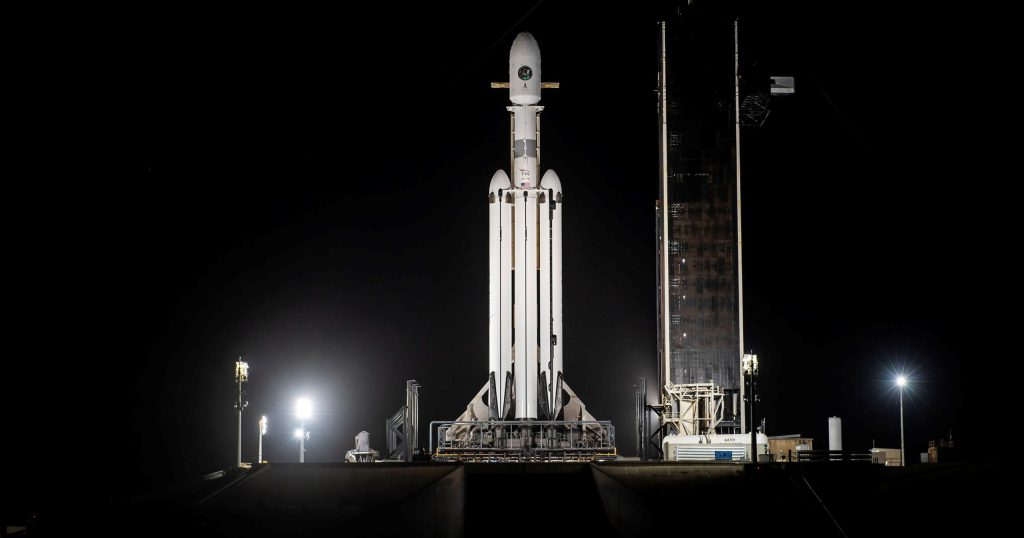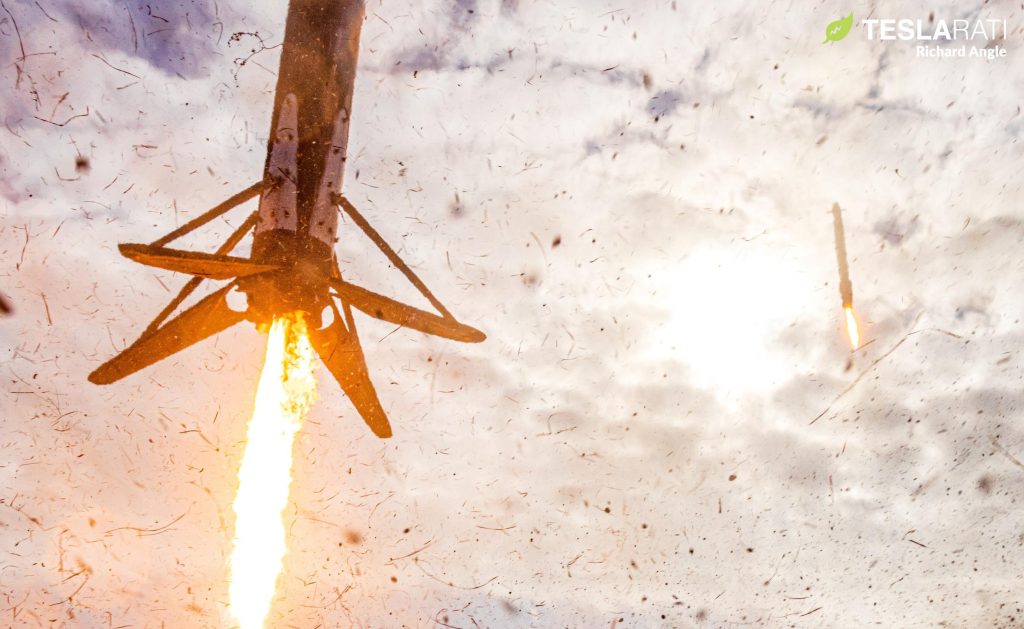

News
SpaceX gears up for busy year of Falcon Heavy launches
SpaceX is targeting no earlier than January 12th for the fifth launch of Falcon Heavy, the largest and most powerful commercial rocket in the world.
As was the case for the rocket’s third and fourth launches, the main customer behind its fifth launch is the US military. Deemed USSF-67, the mission is also expected to be very similar to Falcon Heavy’s most recent launch, USSF-44. That mission saw the massive SpaceX rocket complete its first direct launch to a geosynchronous orbit ~36,000 kilometers (~22,250 mi) above Earth’s surface, where it deployed a pair of spacecraft carrying several rideshare payloads and satellites. Save for the possibility that the US Space Force included secret payloads on USSF-44, the mission appeared to be more of a rocket test and loose collection of experiments than a major military launch.
USSF-67 will likely be similar. According to the US Space Systems Command (SSC), USSF-67 – like USSF-44 – will carry an Aerojet Rocketdyne Long Duration Propulsive EELV (LPDE) spacecraft as a main payload. Aboard LPDE-3A, which is essentially a satellite without a payload, various stakeholders will install an unknown number of experiments, instruments, and smaller satellites that can be activated or deployed once in orbit. The SSC says [PDF] that “LDPE provides critical data to inform future Space Force programs” and that “the unique experiments and prototype payloads hosted on LDPE-3A [will] advance warfighting capabilities in the areas of on-orbit threat assessment, space hazard detection, and space domain awareness.”

The update that's rolling out to the fleet makes full use of the front and rear steering travel to minimize turning circle. In this case a reduction of 1.6 feet just over the air— Wes (@wmorrill3) April 16, 2024
The mission will be Falcon Heavy’s second launch since June 2019 and is scheduled to lift off 72 days after the rocket’s USSF-44 launch, which finally ended its unplanned 1225-day hiatus. The schedule is reminiscent of 2019, when SpaceX launched its second and third Falcon Heavy rockets 75 days apart. The second of those two missions (STP-2) was primarily a test flight for the US Air Force (now the Space Force) meant to both push Falcon Heavy to its limits with a complex trajectory and demonstrate Falcon booster reusability. To accomplish the latter goal, STP-2 reused two of the three Falcon Heavy boosters that supported the rocket’s Arabsat 6A communications satellite launch two months prior. USSF-67 will also reuse both of USSF-44’s Falcon Heavy side boosters.
STP-2 was ultimately a near-flawless success, but endless payload delays left Falcon Heavy with nothing to launch for more than three years. Following its return to flight in late 2022, Falcon Heavy may finally be able to properly stretch its wings in 2023. Of course, this isn’t the first time that’s appeared to be the case. In February 2021, there were many signs that SpaceX was preparing to launch Falcon Heavy in mid-2021. And in late 2021, there were strong signs that SpaceX customers were on track for up to five Falcon Heavy launches in 2022.


Now, for the second time, there are five Falcon Heavy rockets tentatively scheduled to launch this year (2023). But the situation is not identical. Numerous long-delayed payloads like the first ViaSat-3 and Jupiter-3 satellites and the US military’s mysterious USSF-67 and USSF-52 spacecraft are finally on the cusp of crossing their respective finish lines. NASA’s Psyche asteroid explorer spacecraft has also survived a continuation review after running into major software issues that precluded a 2022 launch attempt. And Falcon Heavy finally launched USSF-44 – a chronically delayed mission – in November 2022.
Additionally, four of those five Falcon Heavy launches are tentatively scheduled in the first half of 2023, leaving plenty of margin for major delays in the second half of the year. But until ViaSat-3, Jupiter-3, and USSF-52 actually arrive in Florida and until NASA explicitly confirms that Psyche’s technical issues are resolved, any launch targets should be treated with extreme skepticism.
USSF-67 is thankfully much less uncertain. Like Arabsat 6A and STP-2, USSF-67 will reuse both of the Falcon Heavy side boosters recovered after USSF-44. Mirroring USSF-44, SpaceX will also intentionally expend Falcon Heavy’s new center booster to launch USSF-67 directly to geosynchronous orbit. Most importantly, LPDE-3A – the only confirmed USSF-67 payload – arrived in Florida in November 2022. USSF-67 prelaunch operations are currently running a day or two behind schedule relative to USSF-44, but all evidence indicates that the mission is on track to launch sometime in January 2023.
News
Tesla UK sales see 14% year-over-year rebound in June: SMMT data
The SMMT stated that Tesla sales grew 14% year-over-year to 7,719 units in June 2025.

Tesla’s sales in the United Kingdom rose in June, climbing 14% year-over-year to 7,719 units, as per data from the Society of Motor Manufacturers and Traders (SMMT). The spike in the company’s sales coincided with the first deliveries of the updated Model Y last month.
Model Y deliveries support Tesla’s UK recovery
Tesla’s June performance marked one of its strongest months in the UK so far this year, with new Model Y deliveries contributing significantly to the company’s momentum.
While the SMMT listed Tesla with 7,719 deliveries in June, independent data from New AutoMotive suggested that the electric vehicle maker registered 7,891 units during the month instead. However, year-to-date figures for Tesla remain 2% down compared to 2024, as per a report from Reuters.
While Tesla made a strong showing in June, rivals are also growing. Chinese automaker BYD saw UK sales rise nearly fourfold to 2,498 units, while Ford posted the highest EV growth among major automakers, with a more than fourfold increase in the first half of 2025.
Overall, the UK’s battery electric vehicle (BEV) demand surged 39% to to 47,354 units last month, helping push total new car sales in the UK to 191,316 units, up 6.7% from the same period in 2024.
EV adoption accelerates, but concerns linger
June marked the best month for UK car sales since 2019, though the SMMT cautioned that growth in the electric vehicle sector remains heavily dependent on discounting and support programs. Still, one in four new vehicle buyers in June chose a battery electric vehicle.
SMMT Chief Executive Mike Hawes noted that despite strong BEV demand, sales levels are still below regulatory targets. “Further growth in sales, and the sector will rely on increased and improved charging facilities to boost mainstream electric vehicle adoption,” Hawes stated.
Also taking effect this week was a new US-UK trade deal, which lowers tariffs on UK car exports to the United States from 27.5% to 10%. The agreement could benefit UK-based EV producers aiming to expand across the country.
News
Tesla Model 3 ranks as the safest new car in Europe for 2025, per Euro NCAP tests
Despite being on the market longer than many of its rivals, the Tesla Model 3 continues to set the bar for vehicle safety.

The Tesla Model 3 has been named the safest new car on sale in 2025, according to the latest results from the Euro NCAP. Among 20 newly tested vehicles, the Model 3 emerged at the top of the list, scoring an impressive 359 out of 400 possible points across all major safety categories.
Tesla Model 3’s safety systems
Despite being on the market longer than many of its rivals, the Tesla Model 3 continues to set the bar for vehicle safety. Under Euro NCAP’s stricter 2025 testing protocols, the electric sedan earned 90% for adult occupant protection, 93% for child occupant protection, 89% for pedestrian protection, and 87% for its Safety Assist systems.
The updated Model 3 received particular praise for its advanced driver assistance features, including Tesla’s autonomous emergency braking (AEB) system, which performed well across various test scenarios. Its Intelligent Speed Assistance and child presence detection system were cited as noteworthy features as well, as per a WhatCar report.
Other notable safety features include the Model 3’s pedestrian-friendly pop-up hood and robust crash protection for both front and side collisions. Euro NCAP also highlighted the Model 3’s ability to detect vulnerable road users during complex maneuvers, such as turning across oncoming traffic.
Euro NCAP’s Autopilot caution
While the Model 3’s safety scores were impressive across the board, Euro NCAP did raise concerns about driver expectations of Tesla’s Autopilot system. The organization warned that some owners may overestimate the system’s capabilities, potentially leading to misuse or inattention behind the wheel. Even so, the Model 3 remained the highest-scoring vehicle tested under Euro NCAP’s updated criteria this year.
The Euro NCAP’s concerns are also quite interesting because Tesla’s Full Self-Driving (FSD) Supervised, which is arguably the company’s most robust safety suite, is not allowed for public rollout in Europe yet. FSD Supervised would allow the Model 3 to navigate inner city streets with only minimal human supervision.
Other top scorers included the Volkswagen ID.7, Polestar 3, and Geely EX5, but none matched the Model 3’s total score or consistency across categories. A total of 14 out of 20 newly tested cars earned five stars, while several models, including the Kia EV3, MG ZS, and Renault 5, fell short of the top rating.
Elon Musk
Why Tesla’s Q3 could be one of its biggest quarters in history
Tesla could stand to benefit from the removal of the $7,500 EV tax credit at the end of Q3.

Tesla has gotten off to a slow start in 2025, as the first half of the year has not been one to remember from a delivery perspective.
However, Q3 could end up being one of the best the company has had in history, with the United States potentially being a major contributor to what might reverse a slow start to the year.
Earlier today, the United States’ House of Representatives officially passed President Trump’s “Big Beautiful Bill,” after it made its way through the Senate earlier this week. The bill will head to President Trump, as he looks to sign it before his July 4 deadline.
The Bill will effectively bring closure to the $7,500 EV tax credit, which will end on September 30, 2025. This means, over the next three months in the United States, those who are looking to buy an EV will have their last chance to take advantage of the credit. EVs will then be, for most people, $7,500 more expensive, in essence.
The tax credit is available to any single filer who makes under $150,000 per year, $225,000 a year to a head of household, and $300,000 to couples filing jointly.
Ending the tax credit was expected with the Trump administration, as his policies have leaned significantly toward reliance on fossil fuels, ending what he calls an “EV mandate.” He has used this phrase several times in disagreements with Tesla CEO Elon Musk.
Nevertheless, those who have been on the fence about buying a Tesla, or any EV, for that matter, will have some decisions to make in the next three months. While all companies will stand to benefit from this time crunch, Tesla could be the true winner because of its sheer volume.
If things are done correctly, meaning if Tesla can also offer incentives like 0% APR, special pricing on leasing or financing, or other advantages (like free Red, White, and Blue for a short period of time in celebration of Independence Day), it could see some real volume in sales this quarter.
You can now buy a Tesla in Red, White, and Blue for free until July 14 https://t.co/iAwhaRFOH0
— TESLARATI (@Teslarati) July 3, 2025
Tesla is just a shade under 721,000 deliveries for the year, so it’s on pace for roughly 1.4 million for 2025. This would be a decrease from the 1.8 million cars it delivered in each of the last two years. Traditionally, the second half of the year has produced Tesla’s strongest quarters. Its top three quarters in terms of deliveries are Q4 2024 with 495,570 vehicles, Q4 2023 with 484,507 vehicles, and Q3 2024 with 462,890 vehicles.
-

 Elon Musk4 days ago
Elon Musk4 days agoTesla investors will be shocked by Jim Cramer’s latest assessment
-

 News1 week ago
News1 week agoTesla Robotaxi’s biggest challenge seems to be this one thing
-

 Elon Musk2 weeks ago
Elon Musk2 weeks agoFirst Look at Tesla’s Robotaxi App: features, design, and more
-

 News2 weeks ago
News2 weeks agoSpaceX and Elon Musk share insights on Starship Ship 36’s RUD
-

 News2 weeks ago
News2 weeks agoWatch Tesla’s first driverless public Robotaxi rides in Texas
-

 News1 week ago
News1 week agoWatch the first true Tesla Robotaxi intervention by safety monitor
-

 News2 weeks ago
News2 weeks agoTesla has started rolling out initial round of Robotaxi invites
-

 Elon Musk2 weeks ago
Elon Musk2 weeks agoTesla to launch in India in July with vehicles already arriving: report


















